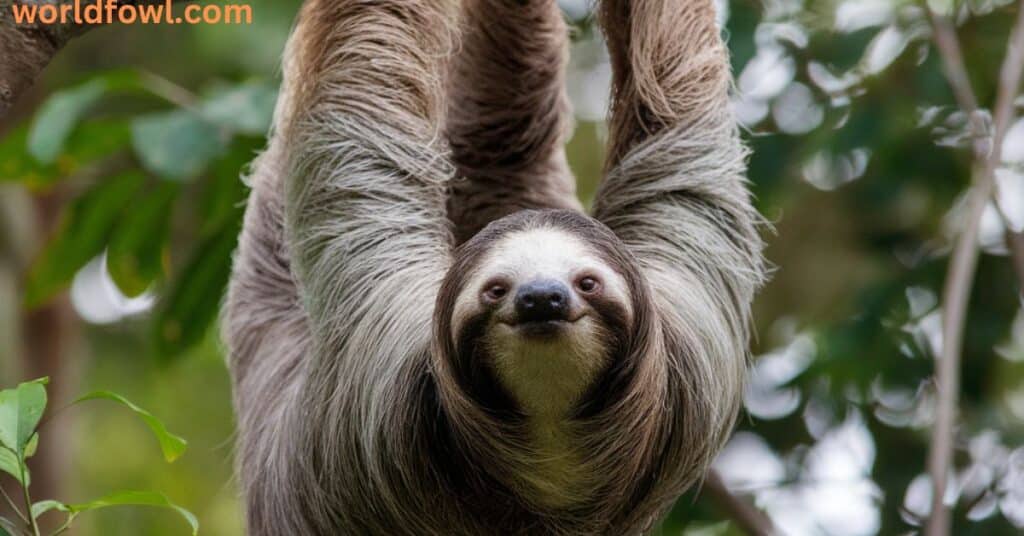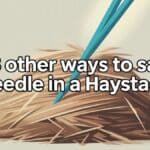When people think of sloths, images of calm, slow-moving creatures come to mind. Their reputation as some of the most tranquil animals in the world precedes them. Yet, with any wild animal, there is often an air of mystery surrounding how they interact with humans. Do sloths attack humans? Can these peaceful creatures ever pose a threat?
In this article, we will unravel the facts about sloths, their natural behaviors, and their defensive mechanisms. We’ll also explore the rare instances when sloths might show aggression, and whether they are truly dangerous to humans. By the end, you’ll have a clear understanding of how to safely interact with sloths and appreciate their non-aggressive nature.
What Are Sloths?
Sloths are arboreal mammals that belong to the order Pilosa. They are most famous for their incredibly slow movements, which result from their low metabolism and specialized diet. There are two types of sloths: the two-toed sloth and the three-toed sloth, each with distinct characteristics.
Types of Sloths
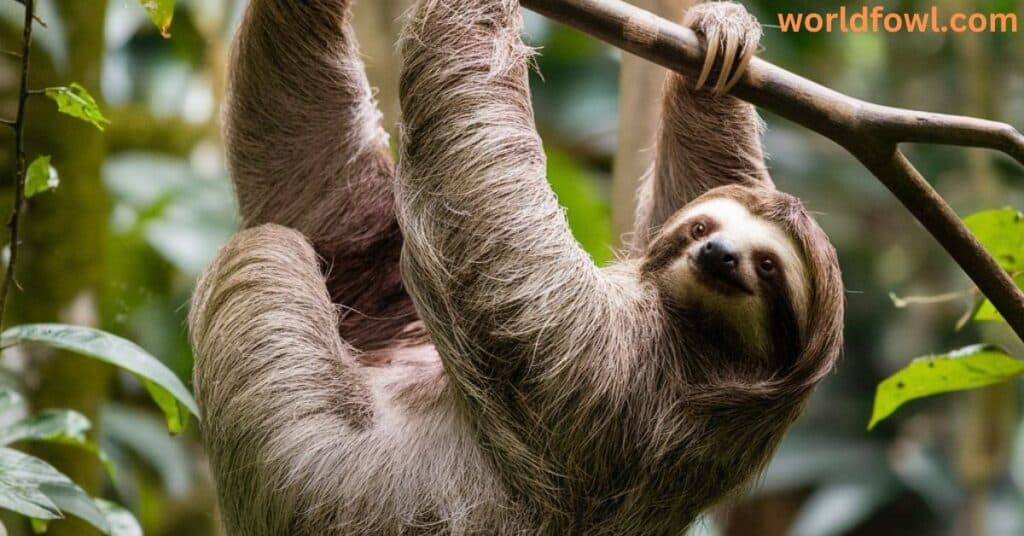
Two-toed Sloths (Choloepus spp.)
The two-toed sloth is generally larger and has two toes on its front limbs. These sloths are more likely to display some sloth aggression compared to their three-toed relatives. This aggression can manifest when they are provoked, but it remains a rare occurrence. They are often found in the forests of Central and South America.
Three-toed Sloths (Bradypus spp.)
Three-toed sloths, on the other hand, are smaller and have three toes on their front limbs. These sloths are more docile and peaceful, spending much of their time hanging from trees and sleeping. Three-toed sloths are often regarded as more tranquil animals due to their calm disposition.
Physical Characteristics and Behavior
Sloths are instantly recognizable for their unique physical traits. They have long claws, a round face, and a slow, deliberate movement style. Their diet mainly consists of leaves, which are difficult to digest, requiring the sloth to expend minimal energy. This low-energy lifestyle makes sloths slow movers, but it also contributes to their peaceful nature.
- Sloth Claws: Sloths have large, curved claws that are perfect for hanging onto tree branches. These claws are not used for offensive purposes but are rather designed to help the sloth stay in place in its treetop environment.
- Diet: Sloths primarily consume leaves, which are low in calories, so they conserve energy by moving slowly and resting for long periods of time.
Here’s the section “What Are Sloths?” presented in a table format:
| Category | Details |
|---|---|
| Scientific Classification | Order: Pilosa Family: Megalonychidae (Two-toed) or Bradypodidae (Three-toed) |
| Types of Sloths | – Two-toed Sloths (Choloepus) – Three-toed Sloths (Bradypus) |
| Physical Characteristics | – Small to medium size (9-20 pounds) – Long, curved claws (up to 4 inches) – Slow movements due to low metabolism – Long arms and short legs for climbing trees |
| Habitat | – Found in Central and South America – Prefer tropical rainforests and dense canopies of trees |
| Diet | – Herbivorous, mainly leaves – Low-calorie diet that requires long periods of digestion |
| Behavior | – Solitary animals – Move very slowly, conserving energy – Spend most of their time hanging in trees |
| Unique Adaptations | – Claws: Used to grip trees for movement and stability – Camouflage: Fur supports algae growth, aiding in camouflage |
| Lifespan | 20-30 years in the wild, shorter in captivity |
This table format provides a clear and easy-to-read summary of the key characteristics and behaviors of sloths.
See Also : Do Praying Mantis Attack Humans? Praying Mantis vs. Humans!
Do Sloths Attack Humans?
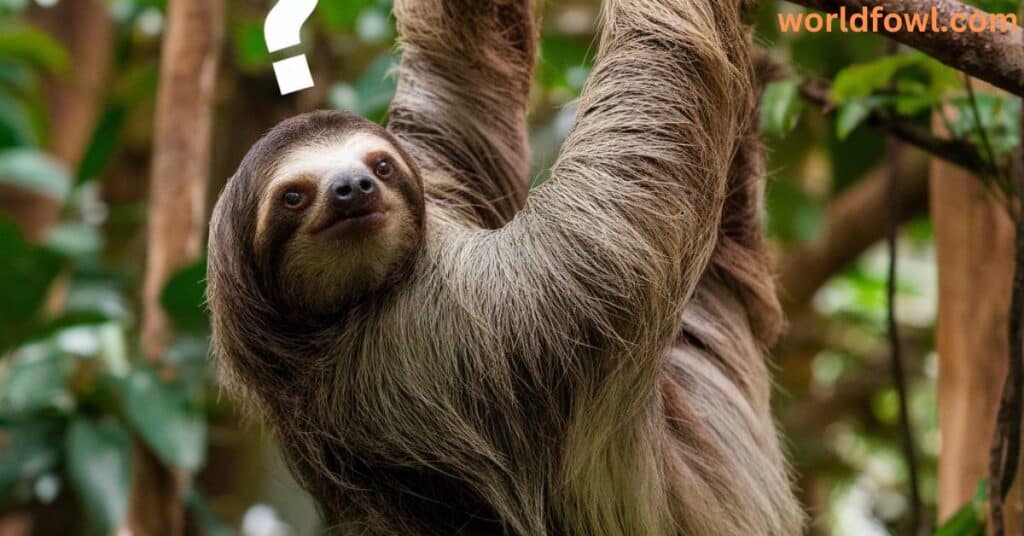
So, let’s get to the big question: Do sloths attack humans? The idea of sloths being dangerous or aggressive is simply a misconception. Sloths are generally peaceful and do not seek out human interaction. In fact, sloths would much prefer to stay out of human sight, blending into their environment rather than confronting anyone.
Myths and Facts About Sloth Aggression
Many people think sloths are dangerous simply because they have sharp claws. However, sloth claws are primarily used for gripping trees and not for attacking. In fact, sloths are typically not aggressive unless they feel threatened or provoked. They are non-aggressive animals, and any potential for harm is usually a result of human impact on sloths—such as encroaching into their habitat or attempting to interact with them inappropriately.
- Myth: Sloths are dangerous and likely to attack if they feel threatened.
- Fact: Sloths are not naturally aggressive and would rather remain still and blend into their environment than confront danger.
See Also : Do Horses Attack Humans? Horse Behavior
Sloth Behavior in the Wild
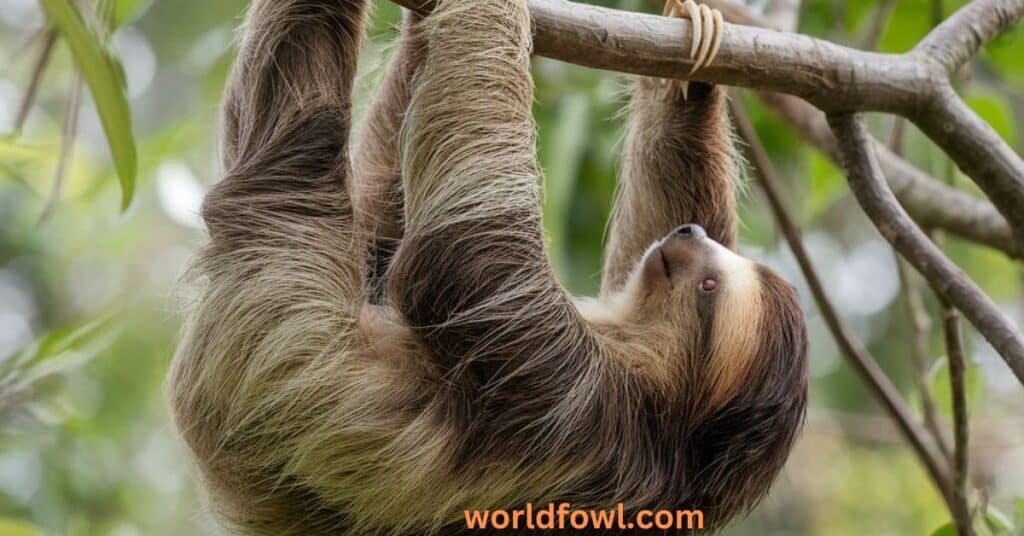
Understanding sloth behavior is key to knowing how they interact with their environment and with humans. Sloths are primarily solitary animals that spend most of their time alone in trees, resting and slowly moving from one tree to the next. Their lifestyle is dictated by their need to conserve energy and avoid detection by predators.
Sloth Diet and Energy Conservation
Sloths are herbivores, and their diet consists primarily of leaves. Since leaves provide limited nutritional value, sloths must eat large quantities to meet their energy needs. This is why sloths move slowly—they conserve energy to digest their food over time.
Their low metabolic rate means that sloths sleep for up to 20 hours a day, and they only move when absolutely necessary. This slow pace is not a sign of laziness but an adaptation to their environment.
The Arboreal Lifestyle: Why Sloths Stay in Trees
Sloths are arboreal creatures, meaning they spend the vast majority of their lives in trees. Their long claws are perfect for gripping branches, and they move through the canopy at a slow pace. This lifestyle helps them avoid predators such as jaguars and harpy eagles, as their slow movements make them less noticeable from the ground.
Sloths also have specialized survival strategies to cope with their environment:
- Camouflage: Sloths have fur that supports algae growth, which gives them a greenish hue and helps them blend into the trees. This natural camouflage helps them avoid detection from predators.
- Stillness: Sloths remain motionless for long periods of time to avoid being seen by predators. This ability to stay still is one of their primary defense mechanisms.
Social Interactions: Solitary or Social?
Sloths are not social animals and spend most of their time alone. They are solitary animals that only interact with other sloths for mating or, in some cases, when they are young. Unlike other mammals that thrive in groups, sloths prefer to keep to themselves. This isolation contributes to their non-aggressive behavior, as they rarely interact with other animals or humans unless absolutely necessary.
See Also : Do Elephants Attack Humans? Exploring the Reality!
Self-Defense Mechanisms: How Sloths Protect Themselves
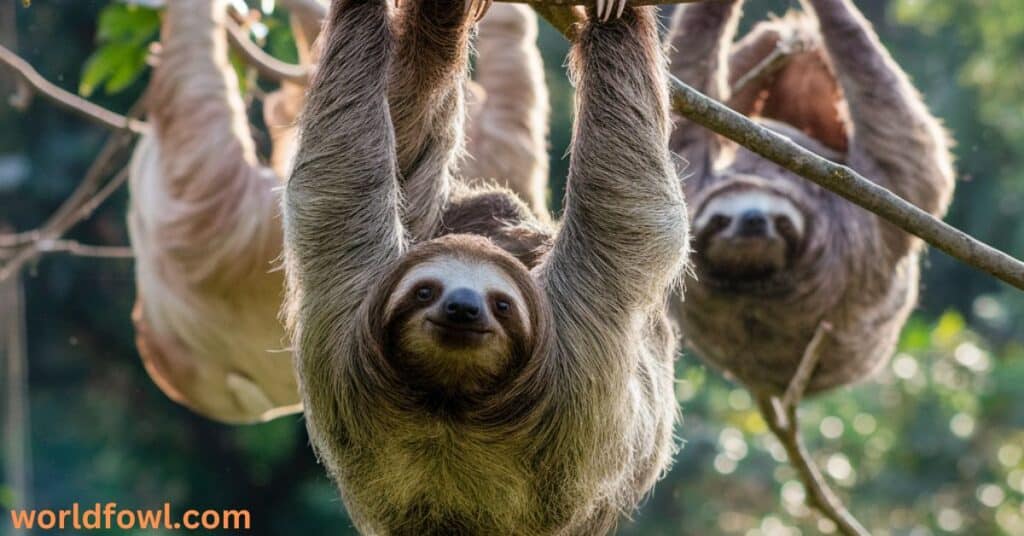
Though sloths are generally peaceful, they do have mechanisms to protect themselves when needed. These defensive mechanisms in animals are designed not to hunt or attack but to keep predators at bay.
Camouflage and Stealth
The most important defense for a sloth is its ability to blend into its environment. The green algae that grows in their fur makes them nearly invisible when they are hanging from tree branches. Sloths are expert masters of stealth and use their environment to hide from predators.
Sloth Claws and Grip Strength: Defensive Tools
Sloths’ claws are long and sharp, and they use them primarily for holding onto branches. However, if a sloth feels threatened or trapped, it may use its claws to defend itself. While it’s rare for a sloth to actively engage in aggression, their claws can cause painful scratches if they’re forced to protect themselves.
Biting: A Last Resort?
Sloths do have sharp teeth and can bite if they feel in danger. However, sloth bites are generally not dangerous, as they are not venomous. A bite from a sloth is more likely to be a reflexive action caused by stress or fear. The damage from a bite is generally minimal, but it’s still important to avoid provoking these creatures.
See Also : Will Cattle Attack Humans? Identifying the Risks!
Rare Instances of Sloth Aggression
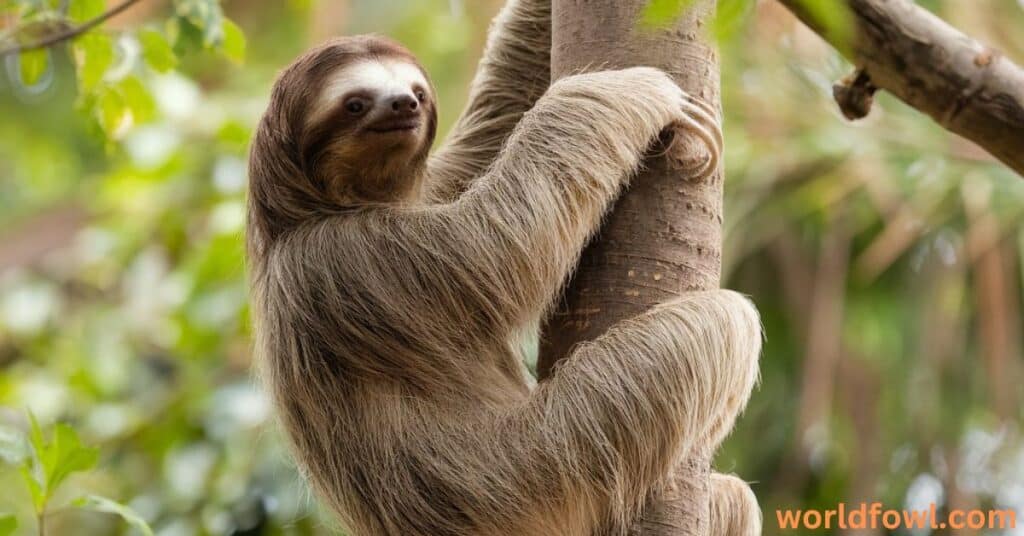
Although it’s rare, there are documented cases of sloths showing aggression, particularly when they feel threatened or stressed. In captivity or in areas where human impact on sloths is significant, sloths may display signs of aggression. { Do Sloths Attack Humans }
Case Study: Aggression in Captivity
Sloths that are kept in captivity are more likely to show signs of aggression than those in the wild. The stress of captivity—being confined to small enclosures or constantly handled by humans—can lead to behavioral changes. In these cases, sloths may bite or use their claws in defense. This is why sloths should not be kept as pets, as it causes unnecessary stress and potential harm to both the animal and humans.
Case Study: Human Encroachment in the Wild
Sloths in the wild are generally peaceful and avoid human interaction. However, if humans encroach too closely or disrupt their habitat, the sloth may feel trapped and could react defensively. While such instances are rare, it’s crucial to respect sloths’ natural habitat and give them plenty of space.
Exploring Sloth Injury Risk: Are Sloths Dangerous?
Despite their claws and teeth, sloths are not inherently dangerous. Any potential for injury is typically a result of accidental interactions rather than active aggression. The risk of a sloth attack is minimal, and they are not likely to target humans unless severely provoked.
See Also : Spiritual Meanings Of A Dog Running Away
Are Sloth Attacks Dangerous?

The risk posed by sloth aggression is incredibly low. While sloths may use their claws to defend themselves if necessary, they are not aggressive by nature. However, there are still some potential risks to consider when interacting with sloths.
Sloth Bites: Are They Venomous?
Sloth bites are not venomous, but they can still cause pain and may lead to infection if not treated properly. The risk of infection comes from bacteria that may be present in the sloth’s mouth, as sloths are often in contact with foliage and other natural elements.
The Risk of Sloth Claws
While sloth claws are not typically used for offense, they are powerful and sharp. A sloth might use its claws to defend itself if it feels cornered, and this could result in painful scratches. The best way to avoid injury is to respect the animal’s space and avoid disturbing it.
See Also : Do Owls Poop – The Juicy Truth
How to Avoid Sloth Attacks and Interactions
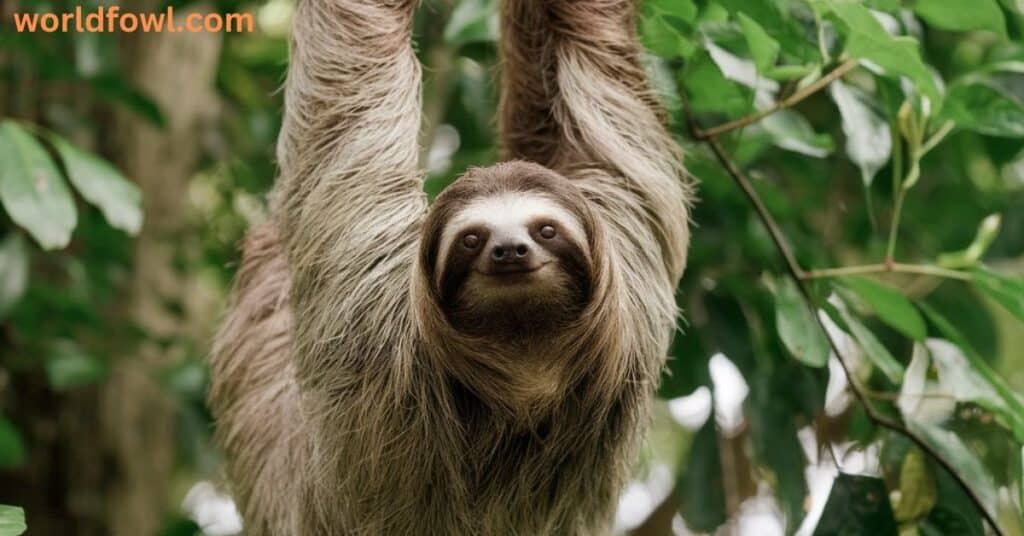
Even though the chance of a sloth attack is incredibly low, it’s still important to know how to safely interact with sloths—whether in the wild or in captivity. Here are some tips for avoiding negative interactions with these fascinating animals:
Best Practices for Observing Sloths in the Wild
- Keep a respectful distance: Sloths do not seek human interaction, so avoid getting too close.
- Move slowly and quietly: Sudden movements can startle a sloth and cause it to feel threatened.
- Avoid physical contact: Never touch or attempt to handle a wild sloth. Not only can this cause stress, but it may lead to defensive behavior.
What to Do If a Sloth Approaches You
If you find yourself face-to-face with a sloth, remain calm. Stay still and allow the sloth to make its way around you. Avoid making eye contact or moving suddenly.
Wildlife Tourism Safety and Ethical Practices
If you’re visiting a sanctuary or participating in wildlife tourism, always follow the guidelines and avoid touching or disturbing the animals. Ethical wildlife tourism supports the conservation of species like sloths while ensuring their natural behaviors are respected.
Final Verdict: The Truth About Sloth Aggression
So, do sloths attack humans? The truth is that sloths are not aggressive creatures. They are peaceful, solitary animals that prefer to remain undisturbed. While they do have defensive mechanisms—such as sharp claws and teeth—these are not used for hunting or attacking humans. Instead, sloths rely on camouflage and stillness to avoid danger.
Any instances of aggression are incredibly rare and typically arise from stress or fear. By respecting their environment and observing them from a distance, humans can safely coexist with sloths and appreciate their unique beauty.
See Also : Do Geese Eat Fish – What Do Geese Like To Eat?
FAQs: Do Sloths Attack Humans ?
Can Sloths Be Kept as Pets?
Sloths should not be kept as pets due to their specialized care needs. Keeping a sloth in captivity can cause it immense stress and harm, as they require a specific diet and environment to thrive.
What Should You Do If a Sloth Approaches You?
Remain calm and still. Avoid sudden movements and let the sloth pass by or move at its own pace. Do not attempt to touch or pick up the sloth.
Are Sloth Bites Venomous?
No, sloth bites are not venomous. However, they can still cause pain and may lead to infection if not properly treated.
Do Sloths Attack Other Animals?
Sloths do not attack other animals. They are primarily herbivores and do not hunt or prey on other creatures. Their main defense is avoiding detection through camouflage and stillness.
Where Can You Safely See Sloths in the Wild?
Sloths can be found in Central and South America, particularly in countries like Costa Rica, Panama, and Brazil. When visiting, always practice ethical wildlife tourism and respect the sloth’s natural habitat.
Conclusion: Do Sloths Attack Humans?
Sloths are not inherently dangerous animals. While they do have the means to defend themselves if threatened, they are primarily peaceful creatures that prefer to stay out of harm’s way. Understanding their behavior, respecting their space, and avoiding unnecessary interactions are the best ways to enjoy the company of these fascinating animals without causing harm to them—or yourself.
By following ethical practices and appreciating sloths in their natural habitats, we can ensure that they remain safe, undisturbed, and free to continue living their slow-paced, peaceful lives.

Henry James is a seasoned blogger and a passionate storyteller on “World Fowl.” With years of experience crafting engaging content, he brings a unique blend of expertise and creativity to his writing. Henry specializes in exploring diverse topics with depth and clarity, captivating readers worldwide.

